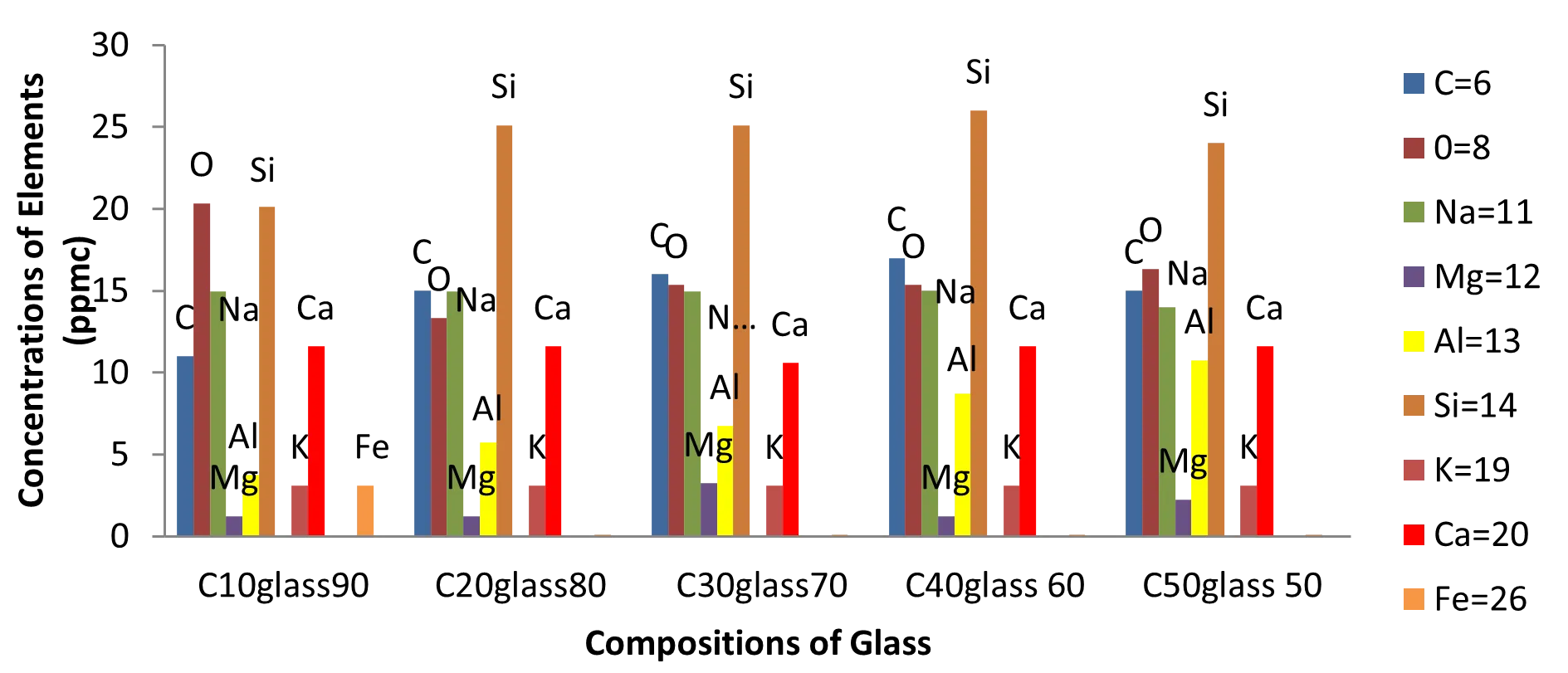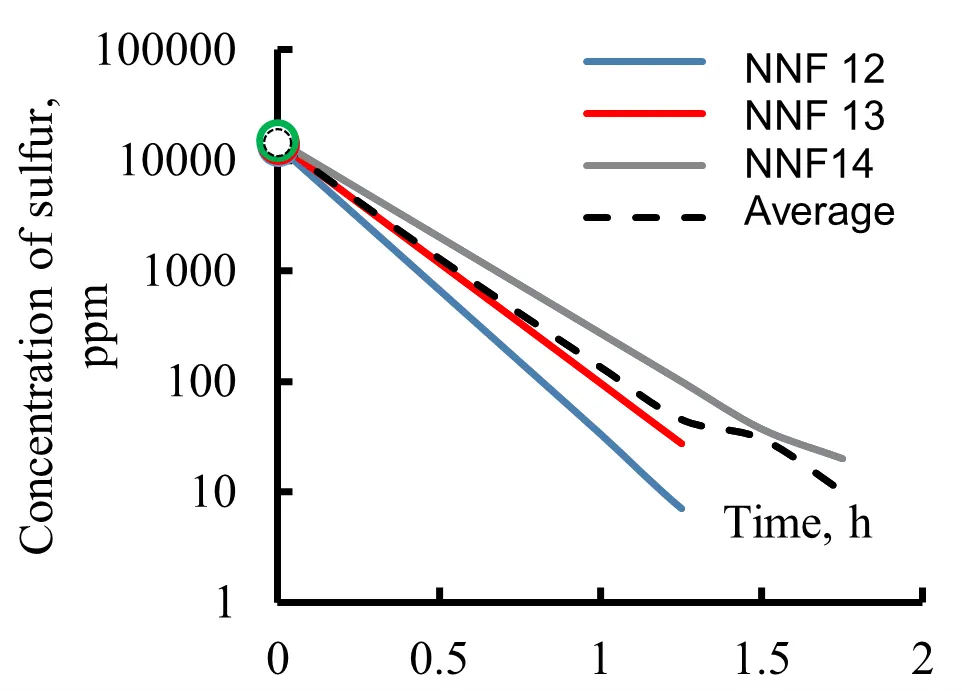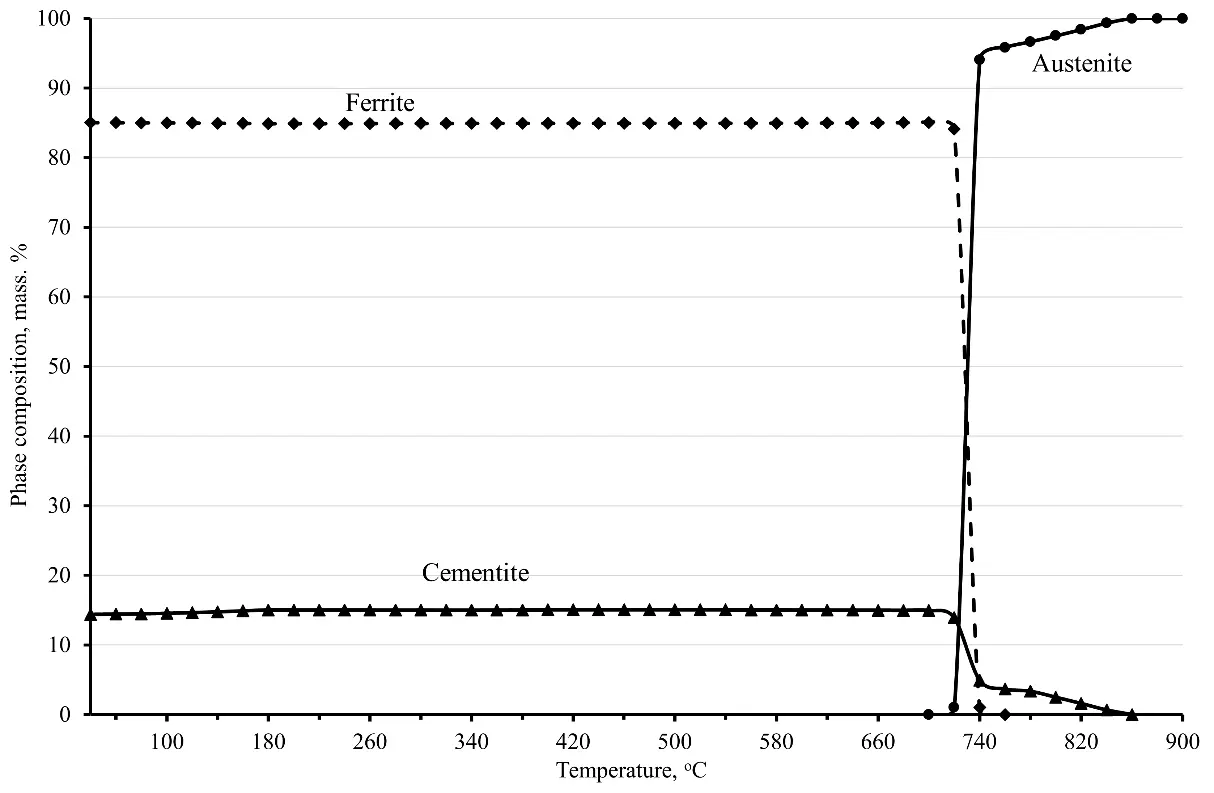Open Access
Article
14 October 2025Electrical Characterization, Optical Micrographs, and the Compositional Analyses of Al-Glass/C-Glass Composites
This report shows the resistance (r) of Carbon-Glass composites and the Current/Voltage (I-V) characterization of Al-Glass composites. The optical micrographs and elemental determination of Carbon-Glass and Al-Glass are in this record. The effects of pressure and the influence of particle size on the electrical properties of these composites are included. The sample area, thickness range, and particle size are respectively 34.0 × 35.0 mm2, 20.8–22.10 mm, and 100 µm. The constituents of the same particle size were made into solids by applying a pressure of 30 MPa. The results obtained from examinations showed that the composition of Al in glass, compaction pressure, and particle size significantly influenced the resistance and the electrical I-V relationship of the compacted materials. The electrical properties of samples are within the range of 10–50% weight of Al in composites, and 0–100% weight of carbon in composites. The resistance of Carbon-Glass is sinusoidal with Mega Ohms values. The current variation of Al-Glass composites is also a sine wave in the I-V display, which is between 0 and 10 µA. The Current-Voltage notation is with sinusoidal resolution for Al-Glass composites. The voltage range is from −0.5 V to 1.0 V.
Open Access
Article
23 October 2025New Model of Multicomponent Raw Materials and Its Use in Intensifying Hydrotreating Process of Diesel Fuel
Hydrotreating of diesel fuel aims to reduce the sulfur content in the fuel to 10 ppm to meet environmental standards. However, this deep purification of diesel requires the use of expensive catalysts at hydrotreating plants with giant reactors with a capacity of 200–600 cubic meters. Such large volumes of reactors are associated with classical kinetic methods for chemical reactions, where the feedstock is in the reactor until the required conversion depth is reached. All known mathematical models for diesel hydrotreatment have a common drawback: they rely on approximations about the composition of multicomponent raw materials containing dozens of different organic sulfur compounds that react differently in hydrogenation reactions. This raw material is often presented in a mathematical model as a combination of two to six pseudo-components or lumps combining organosulfur impurities from one or more homologous groups. This theoretical basis allows us to simulate the current state of hydrotreating technology, but does not develop and promote it. We propose a new approach to mathematical modelling of diesel fuel hydrotreating, in which the structure of the mathematical model considers the composition of raw material as a set of 10–20 narrow fractions. The set of hydrogenated organosulfuric impurities within each fraction is treated as a single pseudocomponent. This allows us to integrate the system of differential equations of the model and adapt the rate constant to the concentration of hydrogenated organosulfur impurities at any given time during the process. The developed model has also allowed us to propose a new technology, hydrotreatment: separating the feedstock into two or three wide fractions, combining the corresponding narrow fractions, and then subjecting them to individual hydrogenation processes. As a new approach, this differential hydrotreatment technique will reduce the catalyst load in the hydrotreatment unit by approximately 50%, while maintaining efficiency of processing, or double efficiency while maintaining a similar catalyst load using traditional technology.
Open Access
Communication
05 November 2025Computer Simulation of the Heat Treatment of Knitting Needles
The article discusses the main steels that are used to make needles for knitting machines. Based on an analysis of literature data, needles for knitting machines are primarily made of high-carbon steel, the main alloying elements of which are carbon in an amount of about 1.0 wt. %, silicon (0.3–0.5 wt. %), manganese (0.55–0.75% by weight), and chromium (about 0.4% by weight). In addition, these steels may contain microalloying additives, such as niobium in an amount of about 0.010% by weight. The publicly available computer model has been expanded to simulate the heat treatment of new materials for knitting machine needles. Using the developed computer model, the optimal structural and phase composition of the knitting needle material is established, which confirms its performance characteristics. It is shown that computer simulation of heat treatment modes makes it possible to conduct computer simulations of heat treatment modes with good accuracy and evaluate the effect of optimizing heat treatment parameters to obtain the best properties. Based on the results of computer modeling, one or more promising heat treatment modes can be selected, which can ultimately have a positive effect on the quality and service life of knitting needles.
Open Access
Article
17 November 2025Effect of the Temperature within the Building Chamber on the Tensile Strength of TPU and ABS Materials
Fused deposition modeling (FDM), also known as fused filament fabrication (FFF), is the most widely used additive manufacturing technique because it offers several key advantages: material flexibility, low cost, high prototyping precision, and ease of use. The mechanical properties of 3D printed products depend on many factors, and one of the most important is the complete control over the temperature within the building chamber. However, research on the influence of chamber temperature is still minimal. This research probes the impact of chamber temperature on the mechanical properties of the printed material, precisely the thermoplastic polyurethane (TPU) and acrylonitrile butadiene styrene (ABS) materials, by using the FFF printing method. This research analyzes the tensile strength of TPU and ABS printing materials by testing printed samples at three different building chamber temperatures (30, 45, and 60 °C). From the analysis data, the study shows that the effect of building chamber temperature on tensile strength of printed parts, and also recommends that to have the best tensile strength for printed parts, the building chamber temperature of both TPU and ABS should be between 30 and 45 °C.



